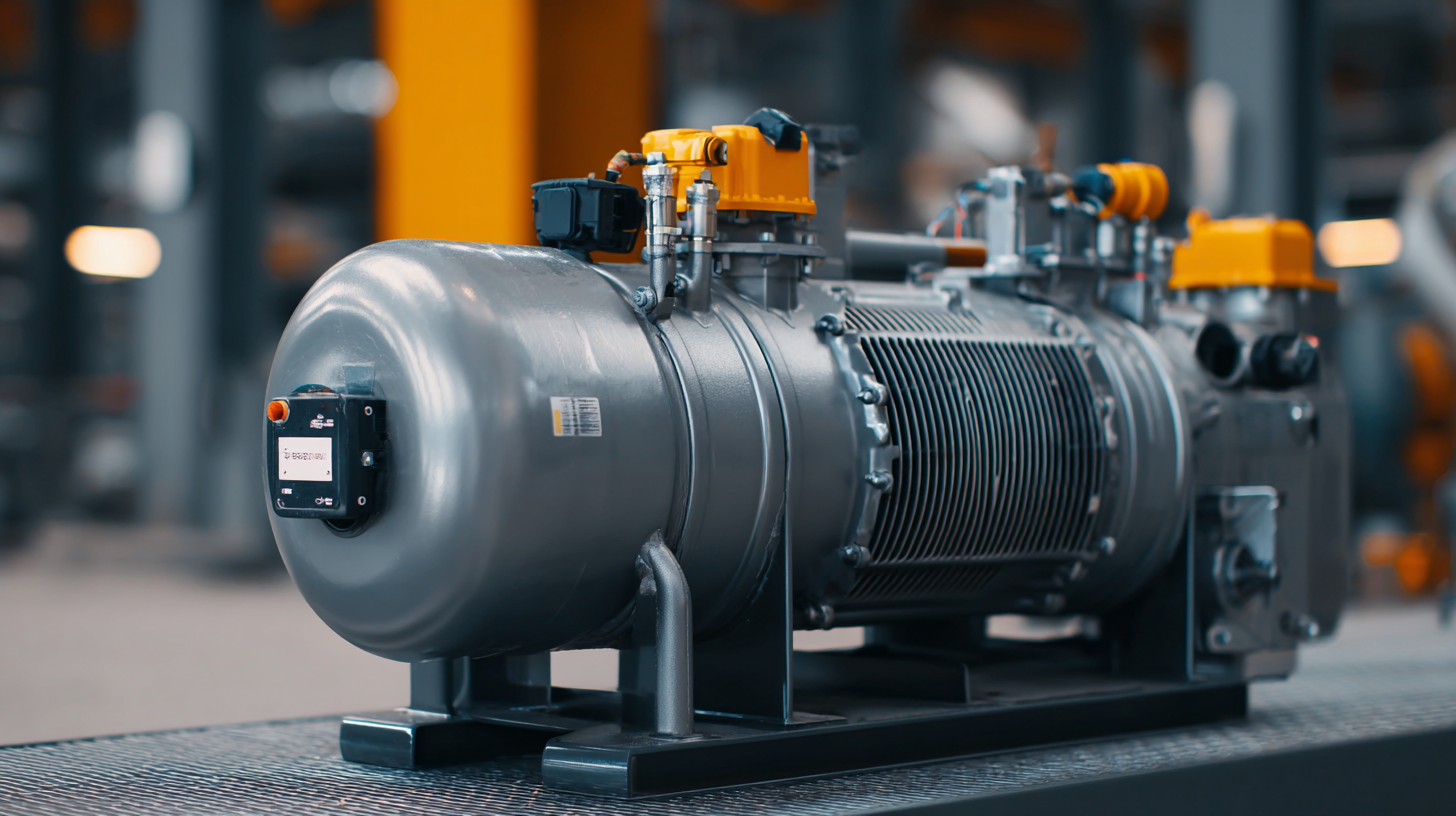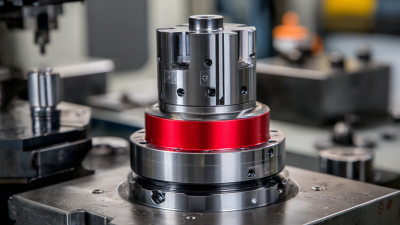
- sales@bjbod.com
- Mon - Sat at 7:00AM to 9:00PM

In today's industrial landscape, maintaining the efficiency and longevity of tools and equipment is paramount, making the role of a Compressed Air Dryer increasingly significant. According to a report by the Compressed Air and Gas Institute (CAGI), incorrectly managed compressed air systems can lead to energy losses that account for up to 30% of total operational costs. Furthermore, the American Society of Mechanical Engineers (ASME) highlights that moisture in compressed air systems can cause substantial damage, leading to increased maintenance and unplanned downtime, which can cost businesses millions annually.

By investing in high-quality compressed air dryers, workshops can significantly improve their operational efficiency, reduce energy costs, and extend the lifespan of their machinery. This guide offers a deep dive into the types, benefits, and selection criteria for compressed air dryers, providing essential tips that can transform the way you manage your workshop's air quality and equipment reliability.
 Compressed air dryers are essential components in many workshops, designed to ensure that the compressed air used in various applications is free from moisture. There are several types of compressed air dryers, each tailored to specific needs and environments. The most common types include refrigerated dryers, desiccant dryers, and membrane dryers. Refrigerated dryers cool the compressed air, allowing moisture to condense and be removed, making them ideal for general-purpose applications.
Desiccant dryers, on the other hand, utilize moisture-absorbing materials to achieve extremely low dew points, making them suitable for industries that require dry air for sensitive processes, such as pharmaceuticals or food processing.
Compressed air dryers are essential components in many workshops, designed to ensure that the compressed air used in various applications is free from moisture. There are several types of compressed air dryers, each tailored to specific needs and environments. The most common types include refrigerated dryers, desiccant dryers, and membrane dryers. Refrigerated dryers cool the compressed air, allowing moisture to condense and be removed, making them ideal for general-purpose applications.
Desiccant dryers, on the other hand, utilize moisture-absorbing materials to achieve extremely low dew points, making them suitable for industries that require dry air for sensitive processes, such as pharmaceuticals or food processing.
Understanding the applications of these dryers is crucial for maximizing their efficiency in the workshop. For instance, refrigerated dryers are often employed in automotive and manufacturing settings where reliability and moderate drying are sufficient. In contrast, desiccant dryers are favored in high-precision machinery and electronics manufacturing, where the risk of moisture damage must be minimized. Membrane dryers, though less common, are used in specialized applications that require compact units with minimal energy consumption. By selecting the appropriate type of compressed air dryer for their specific applications, workshop owners can enhance the performance and lifespan of their equipment, ultimately leading to better productivity and reduced operational costs.
Compressed air dryers are crucial for enhancing the lifespan and efficiency of equipment in workshops. One of the primary benefits is moisture removal from compressed air, which can lead to significant equipment degradation. According to the Compressed Air and Gas Institute, up to 80% of all compressed air-related problems are due to excess moisture. By installing an effective dryer, you can mitigate these issues, extending the lifespan of air tools and machinery by an average of 20-30%.
Additionally, using compressed air dryers can improve energy efficiency. A study by the U.S. Department of Energy found that proper drying of compressed air can reduce energy consumption by up to 30%. Tips for achieving this include regularly maintaining your dryer and ensuring it is correctly sized for your system. Overloading a dryer can inhibit its performance, resulting in moisture build-up and increased energy costs.
Another key advantage is the prevention of rust and corrosion in pneumatic systems. Moisture can lead to internal corrosion, impacting performance and leading to costly repairs. To further enhance equipment longevity, incorporate a scheduled maintenance plan that regularly checks for moisture levels and dryer functionality. This proactive approach guarantees a smooth-running workshop and maximizes the life of your tools.

Maintaining your compressed air dryer is crucial for optimizing its performance and extending its lifespan. Regular inspection and cleaning can significantly reduce downtime and increase efficiency. Ensure that the air intake filters are cleaned or replaced regularly to prevent contaminants from entering the system. Dust and debris can impede airflow, leading to decreased effectiveness and potential damage over time.
Another essential tip is to monitor the condensate drain regularly. Keeping the drain valve and filter clear ensures that water is efficiently removed from the system. This prevents moisture accumulation, which can lead to corrosion and poor air quality in your workshop. Consider investing in an automatic drain to streamline this process and enhance reliability.
Lastly, schedule routine maintenance checks with a qualified technician to identify any potential issues early on. This proactive approach not only helps in resolving minor problems before they escalate but also guarantees that all components are operating optimally. By implementing these maintenance tips, you’ll not only boost the performance of your compressed air dryer but also enhance the overall productivity of your workshop.
| Parameter | Description | Recommended Value | Maintenance Frequency |
|---|---|---|---|
| Air Dryer Type | Desiccant, Refrigerated, or Membrane | Depends on application | Annually |
| Operating Pressure | Optimal pressure for efficiency | 90-100 PSI | Monthly |
| Inlet Temperature | Temperature of incoming air | Below 100°F | Quarterly |
| Moisture Content | Level of water vapor in air | < 40°F Dew Point | Monthly |
| Filter Replacement | Timeframe for changing filters | Every 2000 hours | Every 6 months |
| Condensate Drain | System for removing accumulated water | Automatic or Manual | Weekly |
When selecting the right compressed air dryer for your workshop, it's crucial to assess your specific needs to maximize efficiency and longevity. Start by evaluating your air consumption requirements and the types of tools you operate. Different applications may need varying levels of dryness and pressure, which will help determine the most suitable dryer type—be it refrigerated, desiccant, or membrane dryers.
**Tips for Choosing the Right Dryer:**
Understand the environmental conditions of your workshop. High humidity environments may require more robust drying solutions. Additionally, consider the dryer’s capacity and flow rate to ensure it can handle peak demands without compromising performance.
Another tip is to pay attention to energy efficiency ratings, as energy costs can add up significantly over time. Look for features like variable speed drives and timers that help optimize operation during low-demand periods. Proper maintenance and regular inspections also play a critical role in maximizing the lifespan of your compressed air dryer, ensuring that it continues to perform effectively.
Compressed air dryers play a crucial role in maintaining air quality and efficiency in workshops. However, several common issues can hinder their performance. One prevalent problem is inadequate moisture removal, which can result from clogged filters or malfunctioning separators. According to a report from the Compressed Air and Gas Institute (CAGI), up to 70% of compressed air system failures can be attributed to improper moisture control. Regular maintenance, including timely filter replacements and system checks, can significantly minimize these issues.
Another frequent issue is overheating, often caused by compressor overload or insufficient airflow around the dryer. Excessive heat can not only reduce the efficacy of the dryer but also decrease the lifespan of other connected equipment. The American Society of Heating, Refrigerating, and Air-Conditioning Engineers (ASHRAE) suggests that ambient temperatures above 95°F can lead to a 10% reduction in dryer efficiency. It's advisable to monitor ambient conditions and ensure that your dryer operates within optimal temperature ranges to enhance longevity and operational efficiency. Implementing a proactive maintenance schedule and addressing these common problems can lead to improved productivity in your workshop.





